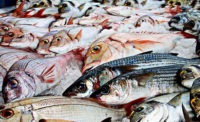The U.S. Food and Drug Administration is issuing a draft Compliance Policy Guide (CPG) that revises the current CPG Sec. 540.525 on decomposition and histamine in fish and fishery products. This draft CPG provides guidance to assist the FDA in addressing adulteration associated with decomposition and/or histamine identified during surveillance sampling and testing. The draft CPG also increases consumer protections related to histamine poisoning by lowering the levels of histamine in fish at which the FDA indicates that it may take action.
Because of the composition of the muscle tissue in certain finfish species, such as tuna, mahi-mahi, and sardines, decomposition after the fish die can produce histamine, which can threaten human health. Unless properly chilled after death and maintained in a chilled state, or otherwise treated or processed to prevent further microbial activity, histamine can accumulate in the edible muscle of these fish. Once formed, histamine cannot reliably be removed by washing, freezing, or heating. Poisoning happens within a few minutes to several hours after ingestion of the food that contains high levels of histamine. However, when properly harvested and handled, these fish have little to no detectable histamine. Histamine poisoning or Scombrotoxin fish poisoning continues to represent the highest number of illnesses associated with finfish in the United States.
The FDA is updating two guidance levels for the presence of histamine in these fish. If samples have 35 parts per million (ppm) or more histamine (lowered from 50 ppm), the FDA may consider the fish to be adulterated because they are decomposed and/or produced under insanitary conditions. At 200 ppm (lowered from 500 ppm), the FDA may consider the fish to be adulterated based on the presence of a deleterious substance (histamine) which may render them injurious to human health. The CPG notes that elevated histamine levels can be prevented in fish by adherence to Current Good Manufacturing Practices and Hazard Analysis Critical Control Point (HACCP) principles required by FDA’s Fish and Fishery Products regulation by each processor in the distribution chain.
The updates to this CPG bring the agency’s regulatory position and thinking in line with current science and increase public health protection.
Comments and suggestions regarding this draft document should be submitted within 60 days of publication in the Federal Register of the notice announcing the availability of the draft guidance. Submit comments electronically on Regulations.gov to docket number FDA-2021-D-0367.
If unable to submit comments online, please mail written comments to:
Dockets Management
Food and Drug Administration
5630 Fishers Lane, Rm 1061
Rockville, MD 20852
All written comments should be identified with the document's docket number FDA-2021-D-0367.
Source: FDA








